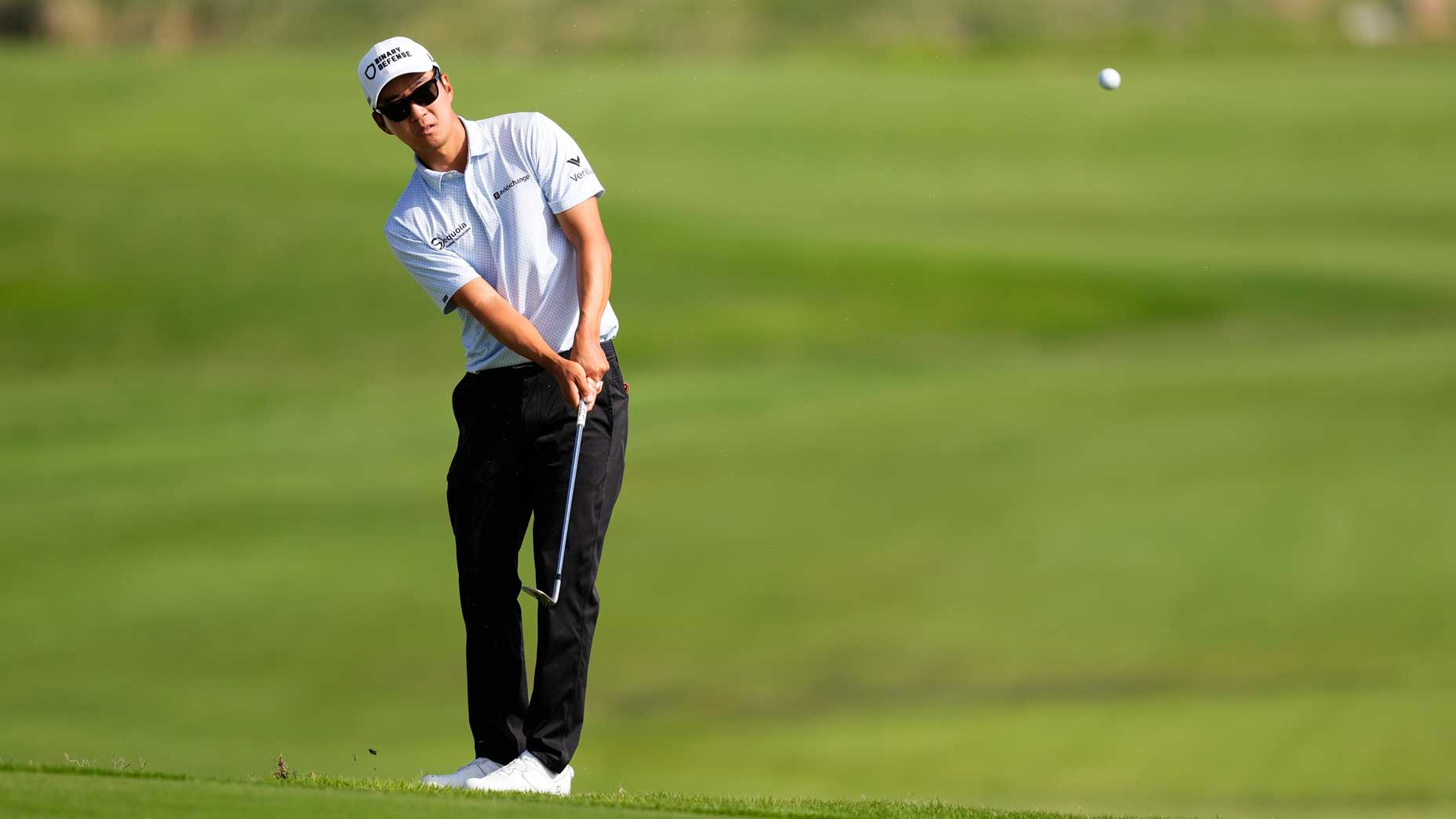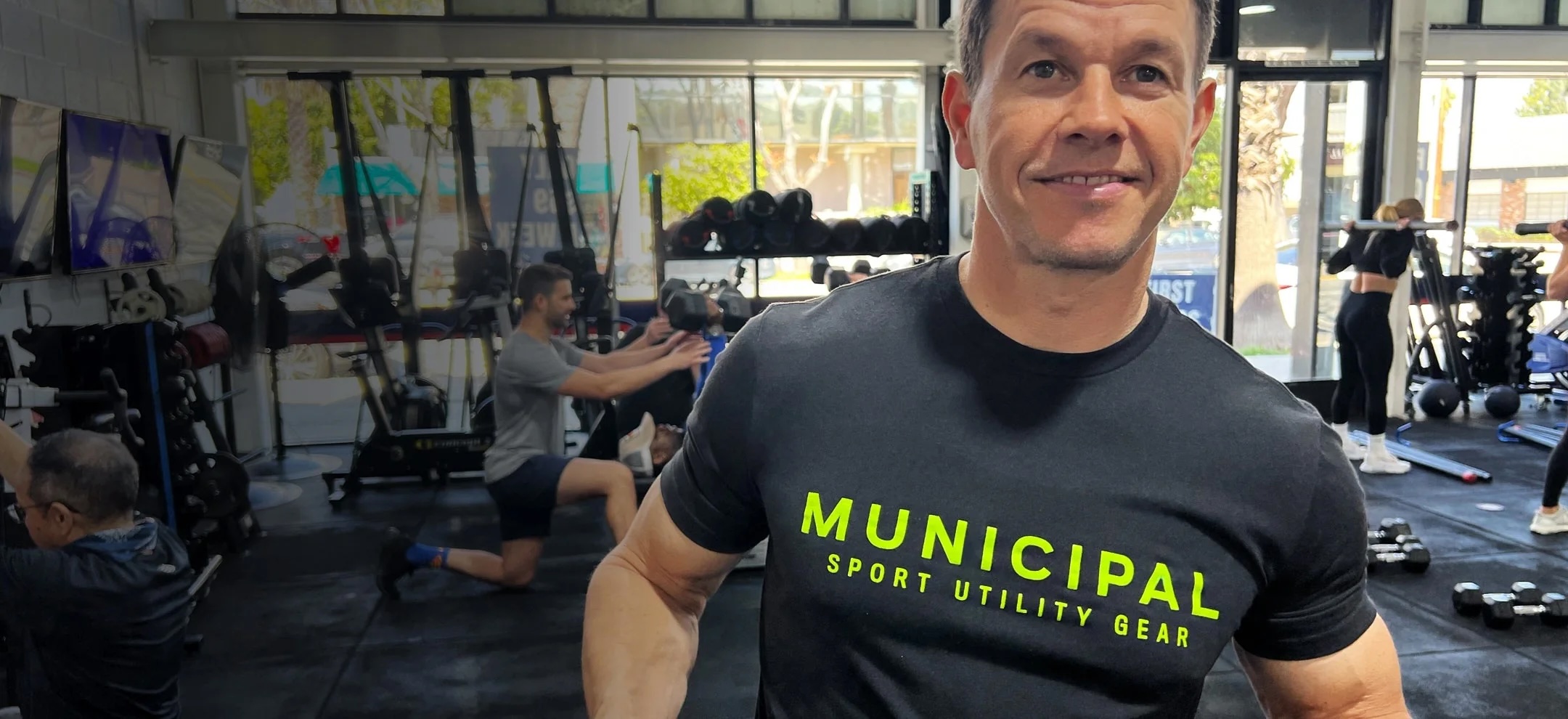Steep vs. shallow: Top teacher says 1 way is best for average golfers

There’s lots of debate about being steep vs. shallow in the short game, so GOLF Teacher to Watch TJ Yeaton explains what’s best.
Getty Images
About a year ago, a viral video on social media of Viktor Hovland excitedly reacting to a flop shot might have changed golf instruction forever. OK, so the hyperbole is a little extreme, but I think you get the point: Never before had so many people debated being steep vs. shallow on pitch shots.
Standing alongside a Ping rep in the 30-second clip, Hovland couldn’t hold back his giddiness after executing the difficult shot.
“I’ve never been able to do that before,” Hovland says. “That was sick.”
From that simple admission, Hovland opened up a can of worms that nobody would’ve ever imagined, with golf teachers everywhere offering up their own opinions about being shallow vs. steep on pitch shots.
But is there a right method? What should a mid-handicapper use vs. a beginner or a scratch player? To help explain the debate and reveal some guidance, GOLF Top 100 Teacher to Watch TJ Yeaton lends his expertise.
Steep vs. shallow: Which is better for the short game?
“When it comes to hitting standard chip and pitch shots, many golfers are now wondering if it’s better to be steep or shallow,” Yeaton says. “First, it’s important to understand what both of those mean.”
Yeaton offers up some quick explainers of both.
“We can measure the trajectory of the clubhead using two different metrics, known as angle of attack and vertical swing plane,” he says. “The more down the clubhead moves at impact (attack angle), coupled with a more vertical travel of the clubhead relative to the ground (swing plane), the steeper it is.”
He then offers a visual.
“If you think about a ferris wheel, it would be moving on a 90-degree vertical swing plane (which is pretty steep!), whereas a merry-go-round would be the flattest vertical swing plane (zero).”
After describing those two elements of the golf swing, Yeaton explains the importance of making ball-first contact.
“It’s in our best interest to hit the ball first before hitting the ground,” he says. “Sure, there are some times when that’s not the case (deep rough and sand), but when possible, hitting the ball first is the best way to create a predictable trajectory and distance. A club that begins interacting with the surface too soon only increases the chance of inference from the ground, which can change the clubhead speed and launch of the ball.”
While making ball-first contact is important, so, too, is making sure we know how to stop the ball — which isn’t something many amateurs often think about, mainly because they’re so focused on making good contact that they forget about controlling distance in the short game.
Yeaton says there are a few options to do this, with spin being the preferred method on a shot that doesn’t require a high trajectory.
So, how does a golfer create spin? Yeaton explains.
“First, you must make clean contact with high friction. Moving the clubhead on a steeper swing plane and steeper angle of attack would keep the clubhead away from the ground the longest, which reduces the chance of debris collecting between the clubface and the ball. This increase in friction also increases spin.
“Next, we have to increase our spin loft, which is the difference between the loft of the club at impact and the angle of attack. We can increase the spin loft by choosing a club with a decent amount of loft and then increase the amount we hit down on it (angle of attack).”
Of course, that’s all easier said than done, which Yeaton understands. It’s why he says the most common issue he sees with amateurs is coming in too shallow, which causes the clubhead to catch the ground before the ball.
“A clubhead that’s moving on a shallower swing plane gets closer to the ground sooner, which then interacts with the dirt, moisture, and other debris on its way towards impact,” Yeaton says. “This is far and away the most common issue I see amongst less-skilled golfers, with those struggling in the short game almost always having the club too close to the ground too soon, preventing them from making clean contact.”
So what can you do to get steeper when you’re trying to make better contact? Yeaton says to try the following.
“At address, put your weight more on the lead side and make sure your sternum is closer to the target than your ball,” he says. “During the backswing, limit the amount you turn your chest, and instead allow your shoulders to tilt more like a see saw (lead shoulder down, trail shoulder up). This will get the club working more up and down and less around. Lastly, make sure you finish with the weight on the lead side at the end, keeping the body more ahead of the ball through the entire downswing.”
Divot Board
$99.99
Introducing the Divot Board, your ultimate golfing companion for immediate feedback and swing correction. This game-changing board reads your divots, providing real-time data on ball flight and helping you improve your technique. Experience the power of instant feedback and elevate your game with this portable and user-friendly device. Perfect for golfers of all levels. Get the Divot Board and take your golfing journey to new heights.
View Product
Related
This week in golf: PGA Tour fall continues; LPGA in…
Here’s a breakdown of this week’s events around the golf world:PGA Tour: World Wide Technology ChampionshipWhen and whe
Going off No. 1: Fun facts from the 2024 LIV Golf…
For LIV Golf’s 13 regular-season events this season, just 156 cumulative spots were available to start their rounds off No. 1. Compare that to a full-field ev
Punch Shots: Which new Dream Golf project – Florida’s Old…
Dream Golf, the company that owns a growing roster of America's most popular golf resorts, announced the initial stages of development at Old Shores, a propert
Paige Spiranac Gives Fans A ‘Wild Ride’ In New Bouncy…
In the clip, the 31-year-old former pro golfer turned social media star flaunts her impressive swing in a tight, unzipped top that led to a playful wardrobe mis


















